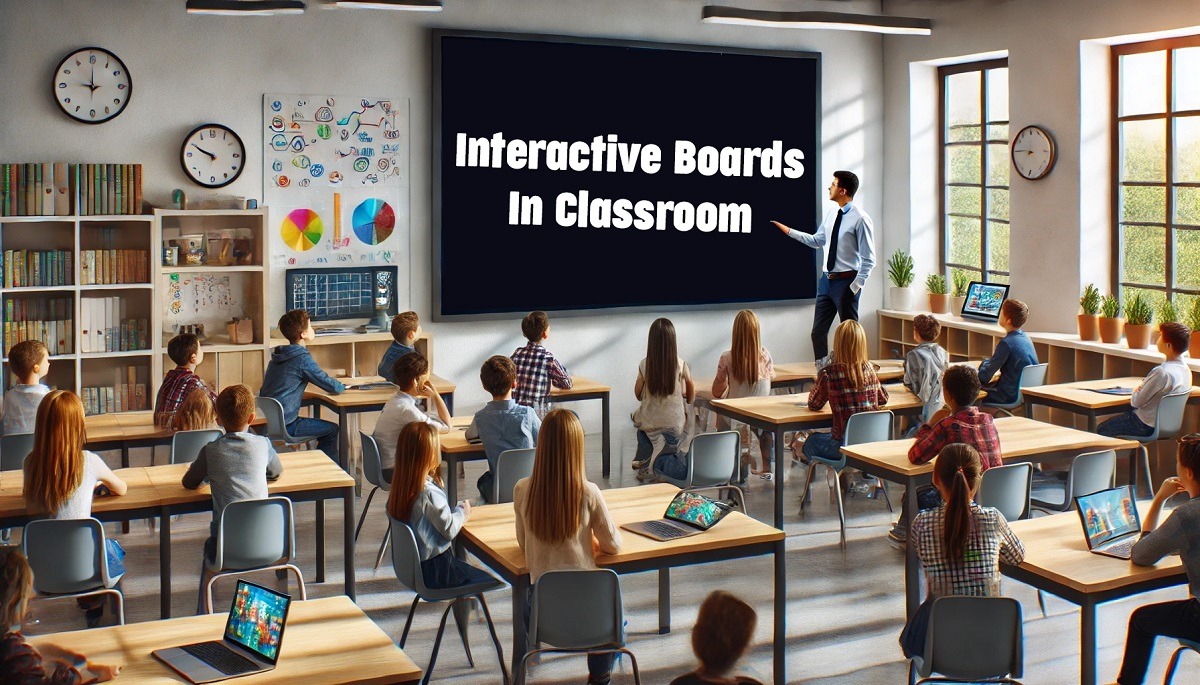In today’s digital age, capturing students’ attention can be more challenging than ever. With distractions at every turn, teachers need tools that not only hold students’ interest but also actively engage them in learning. This is where the interactive board comes in. By merging the traditional whiteboard with modern technology, interactive whiteboards are transforming classrooms, turning them into dynamic learning environments that foster engagement, collaboration, and curiosity.
In this article, we’ll explore why interactive boards are such a powerful addition to the classroom, how they enhance student engagement, and why they’re becoming an indispensable tool for teachers worldwide.
What is an Interactive Board?
An interactive board, often called an interactive whiteboard, is a large touch-sensitive screen that connects to a computer or projector. It allows teachers and students to interact with the screen by writing, drawing, or manipulating digital content with their fingers or a stylus. Unlike traditional boards, which offer limited scope for interaction, an interactive whiteboard can display images, videos, animations, and multimedia presentations, creating a visually captivating platform for lessons.
By transforming the teaching process into a hands-on experience, interactive boards are helping teachers reach students in more effective and engaging ways. Rather than passively listening, students become active participants in the learning process, directly interacting with the content on the board and, ultimately, retaining the information more effectively.
Bringing Lessons to Life with Visual Engagement
One of the main reasons interactive boards have become so popular in classrooms is their ability to make lessons visually engaging. Today’s students are used to consuming information through screens, with visuals, animations, and interactivity. An interactive whiteboard allows teachers to bring these same elements into their lessons, making even the most complex topics approachable and exciting.
For instance, in a history class, instead of merely reading about historical events, students can watch clips, explore interactive timelines, or view detailed maps on the interactive board. These visuals create a more immersive experience, helping students visualize and understand historical events more deeply. This ability to see and interact with the material fosters curiosity and makes lessons memorable, enhancing students’ retention and understanding.
Encouraging Hands-On Learning and Active Participation
Active participation is key to keeping students engaged, and interactive whiteboards excel at making lessons hands-on. Rather than watching from their seats, students are encouraged to come up to the board, answer questions, annotate text, or solve problems directly on the screen. This hands-on involvement allows students to feel part of the lesson, giving them a sense of ownership over their learning.
For example, in a math lesson, students can solve equations on the interactive board by dragging and dropping numbers or drawing out solutions. This tactile experience makes abstract math concepts more concrete and helps reinforce understanding. When students actively participate, they become more invested in their learning, making the classroom a place of excitement and curiosity rather than passive observation.
Fostering Collaboration and Teamwork
An interactive board is not just for individual use; it’s an ideal tool for promoting collaboration among students. Many interactive whiteboards offer multi-touch capabilities, which means several students can work on the board simultaneously. This makes group projects, brainstorming sessions, and collaborative problem-solving activities easier and more engaging.
Imagine a science class where students are tasked with creating a presentation on the water cycle. With an interactive board, each student can add images, notes, or diagrams to a shared presentation, building it together in real-time. By encouraging teamwork, the board helps students develop essential collaboration skills, such as respecting others’ ideas, dividing tasks, and working towards a common goal. This collaborative experience not only reinforces the lesson but also teaches students valuable life skills that extend beyond the classroom.
Simplifying Complex Subjects
Certain subjects, such as science, math, and geography, often involve challenging concepts that can be difficult to grasp through traditional teaching methods. Interactive whiteboards make these subjects more accessible by providing tools for teachers to break down complex ideas into visual, interactive components.
In a biology class, for example, a teacher could use the interactive board to display a 3D model of a cell, allowing students to explore each part by zooming in, rotating, and highlighting specific structures. This visual, hands-on approach makes difficult concepts easier to understand and creates an engaging learning experience. By making the abstract more concrete, interactive boards help bridge the gap between theory and practice, making complex subjects approachable for all students.
Supporting Different Learning Styles
Each student has a unique way of learning, whether through visuals, hands-on activities, or listening. Interactive whiteboards accommodate various learning styles within a single platform, making it easier for teachers to reach every student in the room.
For visual learners, the board can display images, videos, and charts. For kinesthetic learners, the touch-sensitive screen allows them to interact directly with the material. And for auditory learners, the board’s audio capabilities enable teachers to incorporate sounds and spoken explanations into the lesson. By offering diverse learning opportunities, interactive boards create a more inclusive classroom where every student can engage with the material in a way that suits their individual needs.
Building Confidence and Reducing Learning Barriers
Some students may feel shy or reluctant to speak up in class, especially when they’re unsure about the material. Interactive whiteboards provide an alternative way for students to participate and express their understanding. When students are invited to approach the board and interact with the content directly, it can make them feel more comfortable and confident, as they aren’t solely relying on verbal expression.
For instance, in an English class, a student can highlight text, rearrange sentences, or underline key phrases on the interactive board, demonstrating their understanding visually rather than verbally. This flexibility helps reduce learning barriers and provides students with alternative ways to engage, building their confidence and encouraging a positive attitude toward learning.
Personalized Learning and Flexibility
Every classroom is unique, and every student learns at their own pace. Interactive whiteboards allow teachers to tailor lessons to individual needs, making it easier to create a supportive, flexible learning environment. Teachers can save and revisit lessons, adjust content to suit different levels, and provide additional support where needed.
For example, if a group of students is struggling with a particular concept, the teacher can bring up the previous lesson on the interactive board and review it in greater detail. This adaptability ensures that every student receives the support they need, fostering a more inclusive classroom where everyone has the opportunity to succeed.
Preparing Students for a Digital Future
As technology becomes increasingly integral to modern life, it’s essential for students to develop digital literacy skills. Interactive whiteboards offer students a hands-on introduction to digital tools, preparing them for a technology-driven world. By interacting with the board, students become comfortable using digital resources, conducting research, and collaborating online—skills that will be valuable throughout their education and future careers.
The interactive board helps students grow familiar with digital interfaces, understand online collaboration, and navigate multimedia content, providing them with the confidence to use technology effectively. This exposure to digital tools in a classroom setting helps bridge the gap between traditional education and the digital demands of today’s job market.
Conclusion: Interactive Boards as the Future of Engaging Education
In conclusion, interactive boards are transforming classrooms by creating an engaging, inclusive, and interactive learning experience. By allowing students to interact directly with the material, these boards make learning exciting and dynamic, enhancing comprehension and retention. From fostering collaboration to accommodating different learning styles, interactive whiteboards have proven to be a simple yet powerful tool for improving student engagement.
As schools continue to adopt interactive boards, classrooms will become more adaptable, innovative spaces where students are active participants in their learning journey. These tools aren’t just about technology—they’re about creating a learning environment that values every student, supports individual needs, and prepares young minds for a successful future. With interactive whiteboards, teachers are empowered to inspire curiosity, foster collaboration, and make education a truly engaging experience for all.




